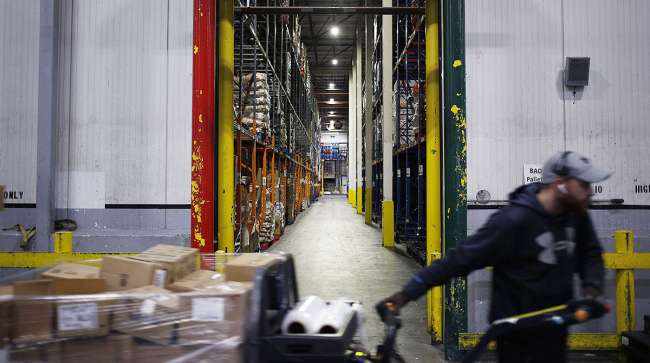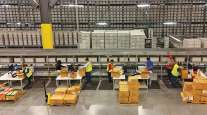Senior Reporter
Economy Shrinks 4.8% in Q1 as Result of Coronavirus

[Ensure you have all the info you need in these unprecedented times. Subscribe now.]
The U.S. economy contracted by 4.8% on an annualized rate in the first quarter, according to the U.S. Commerce Department, which released the gross domestic product figures April 29.
According to the Bureau of Economic Analysis, “The decline in the first-quarter GDP was, in part, due to the response to the spread of COVID-19 as governments issued stay-at-home orders in March. This led to rapid changes in demand, as businesses and schools switched to remote work or canceled operations and consumers canceled, restricted or redirected their spending.”
The drop is the sharpest since the GDP plunged 8.4% in the fourth quarter of 2008 during the peak of the financial crisis.
With only two weeks of shutdowns in the second half of March, economic growth posted the second worst reading this century. Scary thought for the Q2 reading. — Bob Costello (@ATAEconBob) April 29, 2020
American Trucking Associations Chief Economist Bob Costello told Transport Topics that, after looking at the data, he was surprised by the damage done to the U.S. economy in just March, when thousands of businesses began shutting their doors.
“It was even worse than I thought,” Costello said. “I was expecting it to be 3% or 3.5%. The fact that it was almost 5% makes me very worried about the second quarter. It does give me pause about the second quarter and what’s going to happen there.”
Costello said he has revised his second-quarter GDP projections downward from a 20% to 25% drop to as much as 30% on an annualized basis.
“The second quarter could be worse than we originally thought,” he said. “Essentially, the economy was shut down for two weeks in the first quarter, and this is the second-worst reading this century. There was only one quarter in the 2008 financial crisis that was worse.”
Today, Commerce's @BEA_News released the advance estimate for gross domestic product (GDP) for the 1st quarter of 2020, finding that real GDP contracted at an annual rate of 4.8 percent.
Commerce @SecretaryRoss issued the following statement: https://t.co/OYYsEO6lwt pic.twitter.com/aztDWareCb — U.S. Commerce Dept. (@CommerceGov) April 29, 2020
In just six weeks, because of the coronavirus pandemic, the U.S. economy has ended a decade of almost uninterrupted economic expansion, unemployment that was at a 50-year low, and a Dow Jones Industrial Average that nearly reached 30,000.
The GDP measures all of the goods and services that are produced in this country. Consumer spending is the largest sector of the economy, and it accounts for two-thirds of the measurement. To put the drop-off in perspective, first-quarter consumer spending fell at an annualized rate of 7.6%, but in the previous quarter, it was up by 1.8%.
Spending on durable goods such as cars, appliances and furniture tumbled at a 16.1% pace, but spending on nondurable goods such as food, paper towels and toilet paper rose by 6.9%.
Government spending did increase. Still, much of the $3 trillion in federal aid to unemployed workers and closed businesses didn’t start flowing until April.
Costello said there was no specific information in the GDP report relating to the trucking industry.
Rajeev Dhawan, director of the Economic Forecasting Center at Georgia State University, told Transport Topics the service industry — hotels, restaurants and other similar businesses — dropped by 10.2% in the quarter.
“This is a full stop,” he said. “If the consumer is not spending money, this tells me the second quarter will be off of the charts, and the issue that’s critical is how long we remain in a shutdown.”
While many of the nation’s hospitals were packed, handling patients who are ill because of the virus, Costello and other economists were surprised to see medical spending dropped 2.3%, as people skipped such things as routine dental cleanings, visiting a doctor for a checkup, or in many states elective surgeries were postponed.
“We didn’t fully appreciate everything else shut down in health care," he said. “Health care got hit hard.”
Costello repeatedly has said the key to an economic recovery rests with finding a medical solution to the coronavirus, and he says under the best-case scenario, the U.S. economy could be back to its pre-epidemic level by the third quarter of 2021.
The Trump administration is more optimistic. President Donald Trump recently said he expects a “big rise” in GDP in the third quarter, followed by an “incredible fourth quarter, and you’re going to have an incredible next year.”
Second-quarter GDP figures for April, May and June are scheduled to be released by the Commerce Department on Aug. 27.
Want more news? Listen to today's daily briefing:




